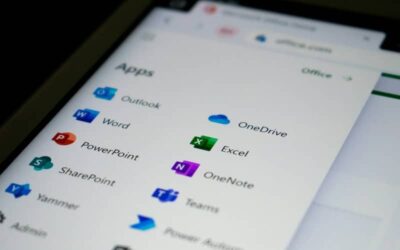In the modern digital age, organizations put a lot of trust in digital services. But with almost every service provider requiring sensitive information–be it the company email or Dropbox login–it’s easy to leave a lot of your footprint online. What’s worrying is that it only takes one security breach to lose it all.
Hackers and identity thieves can damage your systems if they get their hands on your data. This is why every company must have a strong data loss prevention strategy. But what is data loss prevention? And why is it this important? We take a look below.
What is Data Loss Prevention?
Data loss prevention (DLP) is the set of strategies and safeguards put in place by a business to protect personal information. Without one, malicious persons can break into that business’s databases and gather and use this information.
DLP strategies exist to cover two fronts of business access:
- Technical controls – security systems built into the business’ network to detect and prevent malicious intrusions.
- Administrative controls – basic codes of conduct and informational restrictions that prevent business employees from accidentally or deliberately releasing private information.
Every business should also have response plans to handle a worst-case scenario appropriately. Together these controls are designed to protect every piece of data given to and held by a business. Here are some kinds of data that businesses must protect:
- Customer email addresses and information (names, birthdates, social security numbers, etc.)
- Personal and business customer addresses
- Bank account and credit card information
- Employee personal details
- Trade secrets and private information
Why Data Loss Prevention is Vital
As mentioned previously, protecting personal data is important for maintaining the trust held by customers and employees. However, there are many kinds of threats and many reasons beyond just trust that every business must practice DLP.
As technology improves and evolves, so too do the means data thieves use to get hold of private data. Software engineers continually work to develop new ways to protect systems and the data they hold, but their opposites work just as hard. This constant drive for dominance makes keeping on top of DLP an unending need for every business.
Along the same lines, as we become more mobile as a society, the range of our networks becomes much wider. With so many ways to access networks, the ability to protect them becomes much harder. Security for a network of computers is much simpler than one that includes the Internet of Things. This means many weaknesses in the network can be exploited if they aren’t protected appropriately.
The most unfortunate of all ways to lose data is in the hands of a disgruntled employee. It’s not uncommon to hear stories of unhappy personnel taking precious company data and selling it on the black market. This makes it crucial to have a DLP strategy in place. It can help minimize the risk of malicious insiders leaking company information.
Types of Data Loss Prevention
There are many types of DLP you can take advantage of. Each one is designed to help protect the business’s and its customers’ interests and make the company compliant with data protection laws.
Stored Data Protection
The first port of call is to ensure that your business’s data is safe. The provider handles most of it, but on-site data storage will need additional protection. Whether you store data in on-premises hard drives, external data centers, or the cloud will determine the protection you need.
Moving Data Protection
This involves moving data whenever you send it from one place to another. Since you’re not keeping it in one location, the data needs to be protected as it travels and arrives at its destination. Ideally, you must transmit data privately any time you share it over email or phone or store it in an external location. Secured phone lines and enclosed offices are the best methods for protecting spoken data. Email carriers and messenger services will use encryption to disguise information in transit.
Endpoint DLP Technology
An endpoint is any device that receives data, such as a computer or mobile device. This protection is usually handled by in-house cybersecurity programs and data encryption to prevent copying.
Data Leak Detection
Every business should have a baseline for appropriate data storage and transfer. If this information appears out of the norm – such as employees in different departments having access to data they shouldn’t – this will signify a data leak.
Data Loss Prevention Best Practices
There are many different techniques that DLP software and IT teams use to ensure and monitor DLP. These work in many ways, both online and offline. Every business should be using many, if not all, the following:
Control and Monitor Data Access
Any good IT service will add layers of protection to prevent external attacks from malicious data thieves. They will move your customers’ data on password-protected devices and networks. Additionally, they may keep tabs on data as it moves within a system, tracking and addressing potential risks or vulnerabilities before they lead to a breach.
Make Regular Backups
Most off-site hosting services will have this option for storage rental, but it’s always a good practice to back up data on-site. This way, in the event of a catastrophic incident, all protected data will be salvageable.
Educate Employees on Data Protection
Not all losses of data are malicious. Sometimes, data loss can happen because an employee casually tells the wrong person or sends an email to the wrong recipient. Never underestimate how important proper education is when training your employees. Awareness of what they should or should not do will work wonders for preventing data loss.
Set up a Clear Privacy Policy
Ensuring all employees and customers know your data protection policies will help boost confidence and reduce data loss. When everyone works together, your business will not find itself inundated with data it does not need or sharing data it should not.
Conclusion
Every business and all its employees must be aware of the importance of data loss prevention if you want to remain trusted and compliant. The easiest way to leverage DLP is to partner with a managed IT company. A dedicated IT partner can better secure your systems from spoofs, phishing, and malicious emails. Using the latest technology for Data Loss Prevention and resources, they can proactively block or alert against data loss.



